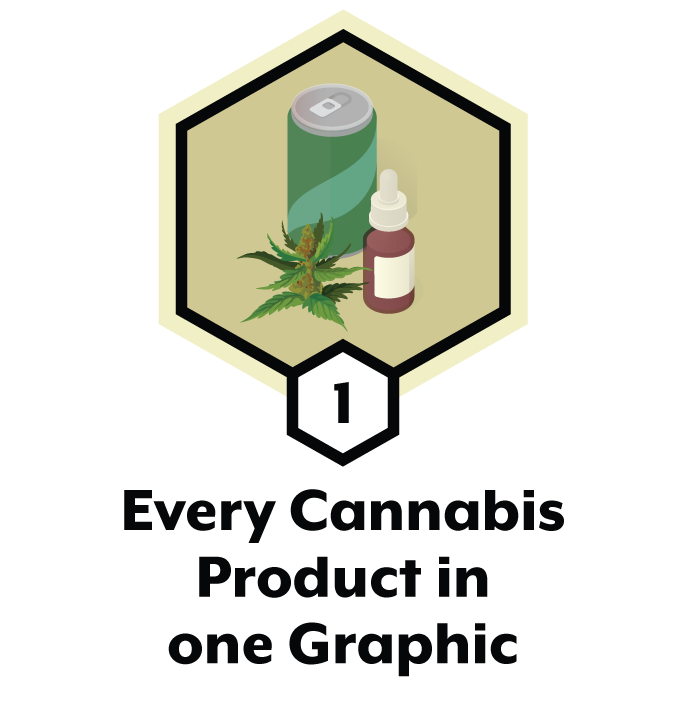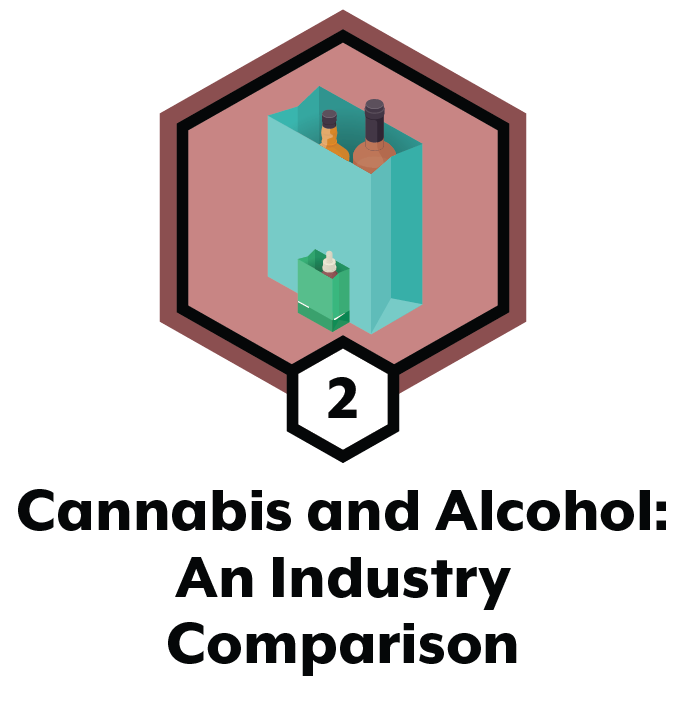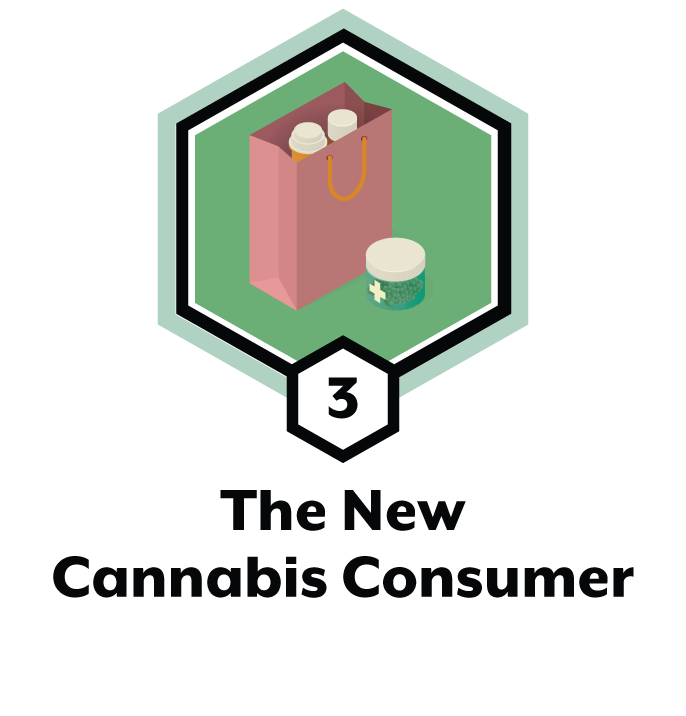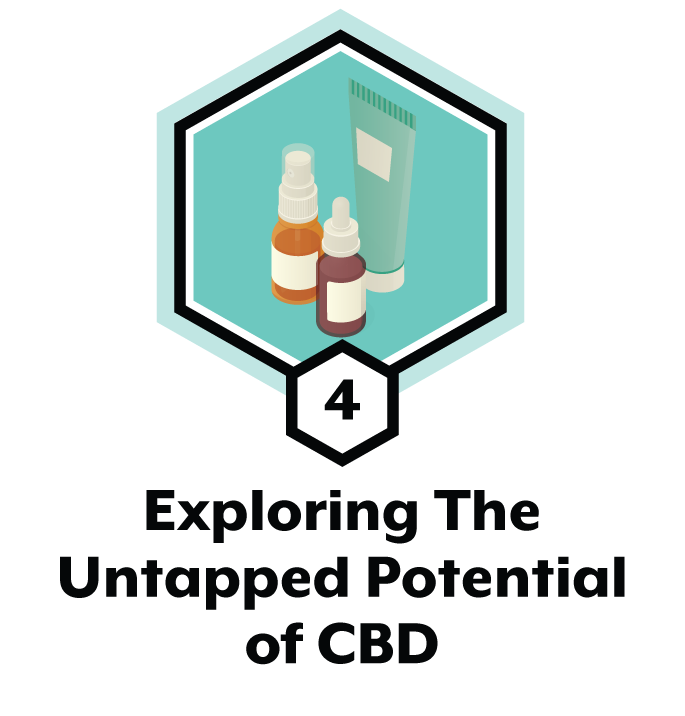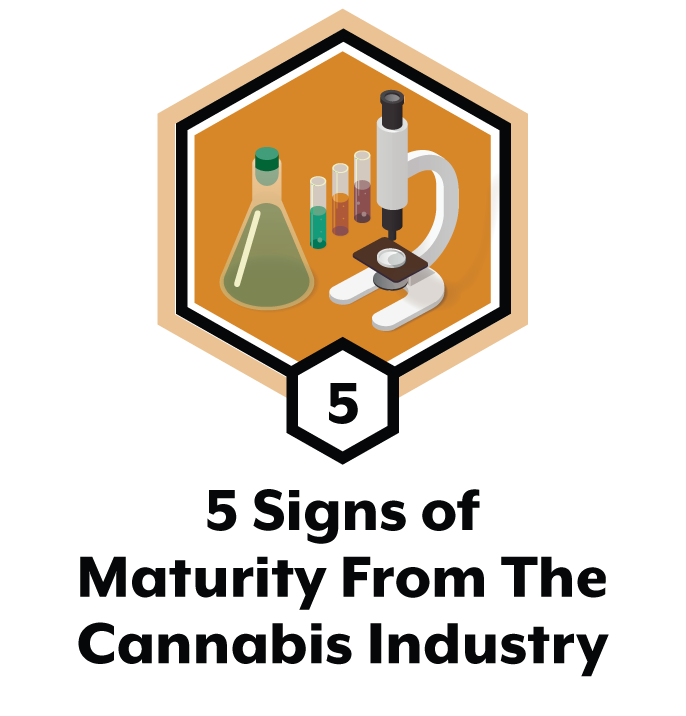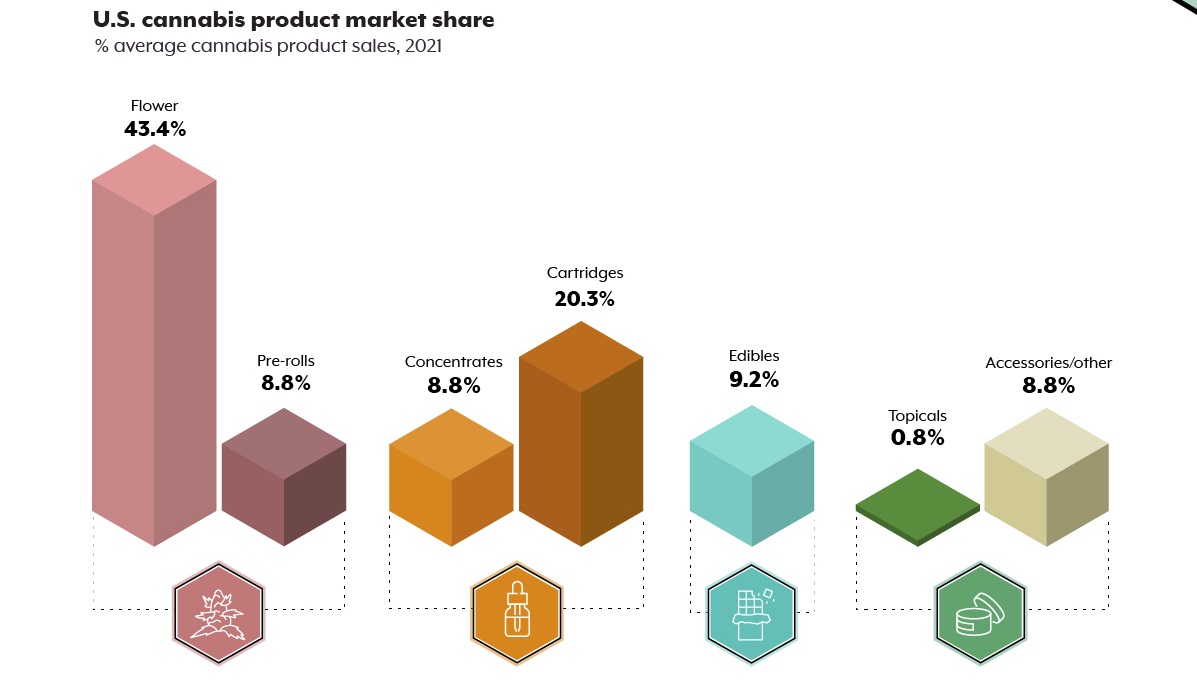Every Cannabis Product In One Graphic
Every Cannabis Product In One Graphic
There are few markets experiencing growth quite like cannabis, which in 2020 had an additional 7,000 products hit dispensary shelves compared to the year prior. However, for novice cannabis consumers and investors, the different products and their uses can be overwhelming.
This sponsored graphic by Tenacious Labs provides an overview of cannabis products, and is part of a multi-part series that covers different factors affecting the future of cannabis.
Let’s break down cannabis products on the market today.
1. Flower
First, is cannabis flower, which is the ingestible part of the cannabis plant and is the most popular way to consume. It is cultivated, harvested, dried, and cured, as part of the preparation process before making its way to the end consumer. Due to its popularity, it also represents the largest component of the U.S. legal market.
In 2021, some $10.9 billion in dried herb or “buds” were purchased. In addition, pre-rolls generated $2.2 billion, which are pre-rolled products prepared by dispensaries. The psychoactive effects from consuming flower are felt almost instantly, which remains a key appeal.
2. Cartridges, Concentrates, and Extracts
Cannabis concentrates are a growing category which have taken the market by storm in recent years. They come in various forms including raw concentrates, cartridges, and extracts. Preparing them involves removing impurities form the plant, leaving only the desired compounds such as cannabinoids and terpenes.
This highly concentrated form of cannabis results in THC levels of 80-90%, compared to the 10-20% range most commonly found in dry herb flower. Raw concentrates hit $2.2 billion in U.S. legal sales in 2021. And cartridges, which are products intended to be vaped and are typically paired with a battery accessory, were worth $5.1 billion.
The appeals associated with concentrates include a higher dose which results in stronger effects, plus a more discrete experience given they have little to no smell.
3. Edibles
Next, are edibles, where the THC is metabolized by the liver and consumed through infused food and drinks. This leads to an different experience relative to inhaling. For example, the euphoric or psychoactive effects typically last much longer and can take 1-2 hours to kick in.
The legal U.S. edibles market is growing fast. It recorded revenues of $2.3 billion in 2021 but is expected to reach a value of $8.5 billion by 2027. These growth prospects have not gone unnoticed, in fact, the alcohol industry is betting big on cannabis. As of late, waves of investments and acquisitions are occurring targeting cannabis-infused beverages.
A key driver of growth comes from the health conscious consumer who may want to avoid the smoking process altogether.
4. Topicals and Others
Last are topicals and other products. Topicals are CBD-infused non-psychoactive products like lotions, balms, and oils. These are gaining notoriety for their wellness properties including the relief of pain, soreness, and inflammation. However, the market remains relatively modest, with a market value of $200 million. Furthermore, the topicals market appeals to those not interested in any psychoactive effects, and is particularly popular amongst women and pet owners.
Other products include papers, pipes, batteries, and all other accessories, which also provide notable revenues and opportunities.
Measuring Market Share of Cannabis Products
With all these products in mind, let’s take a look at market share. Although edibles, vapes, and concentrates have risen tremendously in value over the years, flower still remains number one, representing 43% of legal sales, followed by cartridges at 20.3% market share.
| Product | Market Share (%) | Market Value ($B) |
|---|---|---|
| Flower | 43.4% | $10.9B |
| Cartridges | 20.3% | $5.1B |
| Edibles | 9.2% | $2.3B |
| Concentrates | 8.8% | $2.2B |
| Pre-rolls | 8.8% | $2.2B |
| Topicals | 0.8% | $0.2B |
| Accessories | 8.8% | $2.2B |
Seasonality also plays a role in cannabis consumption. Since dry flower tends to be consumed outdoors, the data shows that it loses market share during the cold winter months.
The Next Chapter
Cannabis products have come a long way from their early days when variety was considered a choice between an indica or sativa strain. As the industry develops and more money is injected into the space, we should see product innovation accelerate even further.

-

 Sponsored3 years ago
Sponsored3 years agoMore Than Precious: Silver’s Role in the New Energy Era (Part 3 of 3)
Long known as a precious metal, silver in solar and EV technologies will redefine its role and importance to a greener economy.
-

 Sponsored7 years ago
Sponsored7 years agoThe History and Evolution of the Video Games Market
Everything from Pong to the rise of mobile gaming and AR/VR. Learn about the $100 billion video games market in this giant infographic.
-

 Sponsored8 years ago
Sponsored8 years agoThe Extraordinary Raw Materials in an iPhone 6s
Over 700 million iPhones have now been sold, but the iPhone would not exist if it were not for the raw materials that make the technology…
-

 Sponsored8 years ago
Sponsored8 years agoThe Industrial Internet, and How It’s Revolutionizing Mining
The convergence of the global industrial sector with big data and the internet of things, or the Industrial Internet, will revolutionize how mining works.

